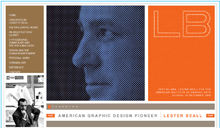GC 101: Syllabus
INSTRUCTOR
Gregory Kelley
Phone: 760.744.1150 ext 2452
Email: gkelley@palomar.edu
DESCRIPTION
This course focuses on the history and evolution of graphic communications from prehistoric pictographs to present day graphic design. Topics include the invention of writing and the creation of alphabets. Other topics include world influences on print and aesthetic design, and an understanding of the stylistic, social, political, economic, and historical events as related to communication and graphic design. The emphasis is on art movements, schools of thought, influential individuals, and technology as they interrelate with the history of graphic arts. Historical topics are applied to photography, print media graphics and motion graphics.
OBJECTIVES
Upon successful completion of the course the student will be able to explore the history of the visual message from prehistoric to modern times with a focus on graphic communications; identify the most significant historical influences in graphic communications; understand and discuss the origins of typography and its influence on visual communication; discuss the impact of the industrial revolution and technology on graphic communication design; determine the historical, political and aesthetic impact the printing press had on communication and design; understand of the impact of the modernist era on graphic arts; effectively discuss the importance of historical events leading up to the information age; understand the effect that the digital age has had on communication in new media.
OUTCOMES
Upon successful completion of this course, students will be able to summarize the historical development of graphic communication from the formation of writing to the digital revolution.
MATERIALS
Required Reading:
Meggs, Philip A History of Graphic Design, New York, NY: Wiley Publishing, 2016
Recommended Reading:
Bernstein, Mashey Writing for the Visual Arts, Saddle River, NJ: Prentice Hall, 2001
Heller, Steven Design Literacy: Understanding Graphic Design, New York, NY: Allworth Press, 2014
Meggs, Philip Type and Image: The Language of Graphic Design, New York, NY: Wiley & Sons Publishing, 1992
METHODS
In this class, we will study the historical development of graphic communication through its genre, design, format, and style. We will do this is by examining graphic design within the context of its time; through the analysis of form based on the designer's use of line, shape, color, texture, and composition; by examining the iconography of particular design elements; and by the application of a non-artistic analytical framework to the study of graphic communication.
GRADING
Your grade is based on a weekly writing assignment, four exams, and a final project. The total semester value is 1000 points. Assignments will be posted each Monday and are due on Sunday of that week. Assignments not completed on time will get a 50% reduction of points.
A = 1000 – 900 • B = 899 – 800 • C = 799 – 700 • D = 699 – 600 • F = below 599
ATTENDANCE
The flexibility of online courses allows students to complete assignments and participate in collaborative work from wherever there is a reliable Internet connection. In an online environment, attendance is measured by the quality and frequency of the posts in the discussion forums, and by participating in an academic activity within the online classroom, which includes posting in a graded discussion forum, submitting assignments, completing quizzes, and posting projects. Absence from these discussion forums for more than a few days may prevent you from maintaining the level of interaction that is required for success in this course


